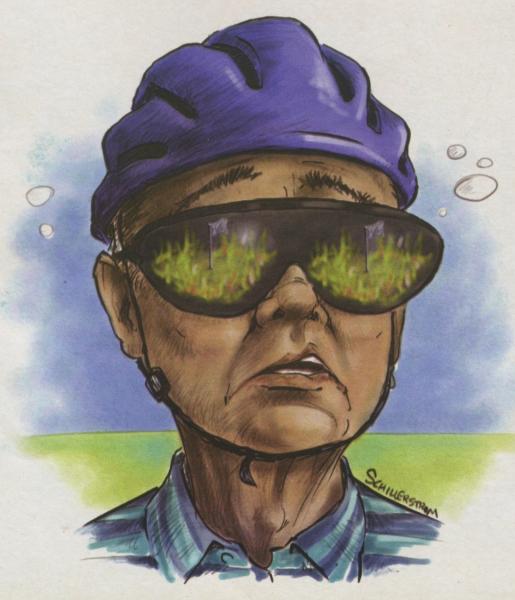Secrets To "Good" Greens
From the Rockbottum CC archives, first published in October of '05.
Since I probably will never again work in a supervisory position on a golf course, I have decided to reveal my most guarded trade secrets. (No, not the special fungicide recipes I acquired from top Atlanta superintendents by means of industrial espionage.)
I'm referring to the survival secrets that allowed me to grow "good greens" in a difficult environment and remain well below the clubhouse complaint radar.
Before I get to the tell-all part, I feel the need to qualify what I mean by "good greens" since I've spent years making fun of my abilities. To give my secrets credibility, it is necessary to brag a bit.
In a September '98 USGA Turf Advisory Report, Pat O'Brien, Director of the USGA Green Section Southeast Region, wrote "Randy's Crenshaw putting surfaces at Sugar Creek are truly some of the finest in the SE region at this time . . . Randy's renovation design at Sugar Creek was ingenious, a plan I have never seen done before."
It is important to note that O'Brien and I are not friends.
The following trade secrets appear in no particular order:
*In the Deep South, it is important to maintain and have at the ready, a dedicated greens-only spray rig. This is important because the ETR does not exist here due to the absence of any kind of evaporation. Humidity here is 94% everyday, except for two days in October. For those who don't know what humidity levels of 94% feel like, put your face in warm dishwater and try to breathe. (Darwin's inspiration for his theories came to him while playing golf in Georgia, when an advanced rhizoctonia fungus grew legs and chased him for several holes.)
*The spray rig should be off-limits to everyone except the equipment manager and the spray tech, and isolated so there is no chance of foreign material being introduced. When the rig is in operation, the spray tech should be handcuffed to it at all times.
*Removing trees will immediately improve conditions on any golf course, especially those with failing greens. O'Brien suggested removing any tree within 60 feet of the putting surface, however I went further. I would stand on an ailing green and scan the horizon. If I could see a tree, I cut it down. (I also dropped any sweetgums within five miles of the course.)
*Besides treating the Equipment Manager as royalty, I also elevated the role of Wilt Watcher. The WW was regularly placed on Poke & Soak detail, in which he poked hydrophobic areas with a four-tined pitchfork and soaked that location with water prior to 0800hrs. The primary duty of the WW was to detect disease before I found it. Failure resulted in creek bank sling-blade detail. A day spent fending off yellow-jackets and snakes usually made for a much more attentive WW upon his return to duty. (Often, he would come back carrying a microscope and speaking Latin.)
*When working with clay, pushup bent greens, I always ignored the "water infrequently but deep" commandment. Watering non-perc greens like that was a recipe for adobe brick with thin, fuzzy toppings. Since a sophisticated mist system was not affordable, I used the old Rainbird 41/51 heads with the spring cranked down so tight that it twirled like Dorothy Hamill on meth, allowing for "misting" between foursomes. I also loosened the top plates. A split-second pulse of 24v produced a fearsome clanking noise that always hurried along the more slothful groups.
*My favorite trade secret was my accidental discovery of wilt-predictor glasses. In '84, I came to work after a long bicycle ride and forgot to remove my cycling glasses. (The kind that blocked blue light rays.) I saw burning greens everywhere, ran around shrieking at the WW and threatened to commit violence upon his lazy carcass--until I removed the glasses and saw the turf looked fine to the naked eye. Later that same day, the areas I saw through the glasses were the first spots to light up. I didn't reveal this for years, mostly because it made me appear mystic and prophetic to the hosers.
*Lastly, I was prudent with verticutters and the low-mow fetish, no matter who advised it. I disliked removing grass I would later need during the dog days of August.



0 Comments
Recommended Comments
There are no comments to display.